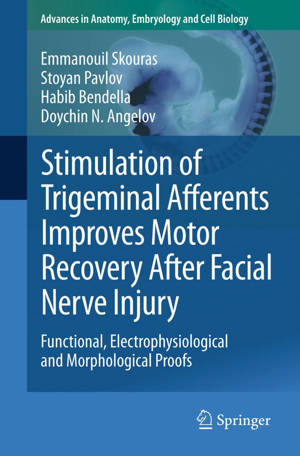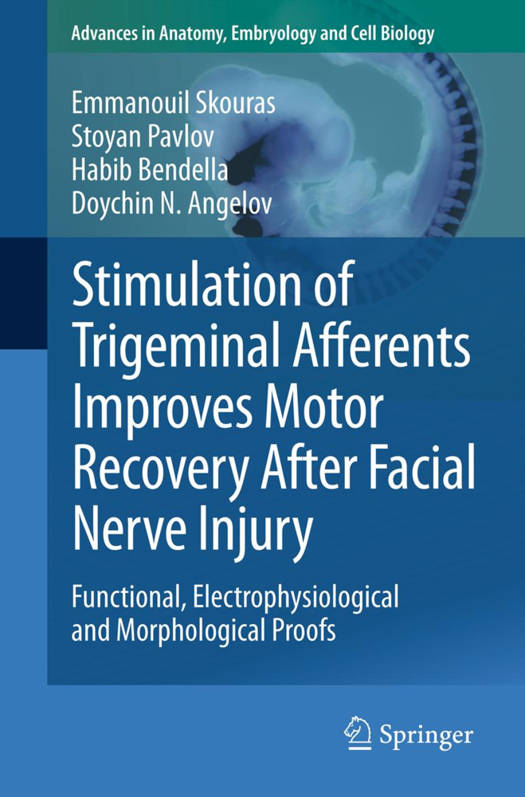
- Afhalen na 1 uur in een winkel met voorraad
- Gratis thuislevering in België vanaf € 30
- Ruim aanbod met 7 miljoen producten
- Afhalen na 1 uur in een winkel met voorraad
- Gratis thuislevering in België vanaf € 30
- Ruim aanbod met 7 miljoen producten
Zoeken
Stimulation of Trigeminal Afferents Improves Motor Recovery After Facial Nerve Injury
Functional, Electrophysiological and Morphological Proofs
Emmanouil Skouras, Stoyan Pavlov, Habib Bendella, Doychin N Angelov
€ 105,45
+ 210 punten
Omschrijving
Recovery of mimic function after facial nerve transection is poor: the successful regrowth of axotomized motoneurons to their targets is compromised by (i) poor axonal navigation and excessive collateral branching, (ii) abnormal exchange of nerve impulses between adjacent regrowing axons and (iii) insufficient synaptic input to facial motoneurons. As a result, axotomized motoneurons get hyperexcitable and unable to discharge. Since improvement of growth cone navigation and reduction of the ephaptic cross-talk between axons turn out be very difficult, the authorsa concentrated on the third detrimental component and proposed that an intensification of the trigeminal input to axotomized electrophysiologically silent facial motoneurons might improve specificity of reinnervation. To test the hypothesis they compared behavioral, electrophysiological and morphological parameters after single reconstructive surgery on the facial nerve with those obtained after identical facial nerve surgery, but combined with direct or indirect stimulation of the ipsilateral infraorbital (ION) nerve. The authors found that in all cases trigeminal stimulation was beneficial for the outcome by improving the quality of target reinnervation and recovery of vibrissal motor performance.
Specificaties
Betrokkenen
- Auteur(s):
- Uitgeverij:
Inhoud
- Aantal bladzijden:
- 110
- Taal:
- Engels
- Reeks:
- Reeksnummer:
- nr. 213
Eigenschappen
- Productcode (EAN):
- 9783642333101
- Verschijningsdatum:
- 16/12/2012
- Uitvoering:
- Paperback
- Formaat:
- Trade paperback (VS)
- Afmetingen:
- 152 mm x 229 mm
- Gewicht:
- 181 g

Alleen bij Standaard Boekhandel
+ 210 punten op je klantenkaart van Standaard Boekhandel
Beoordelingen
We publiceren alleen reviews die voldoen aan de voorwaarden voor reviews. Bekijk onze voorwaarden voor reviews.











